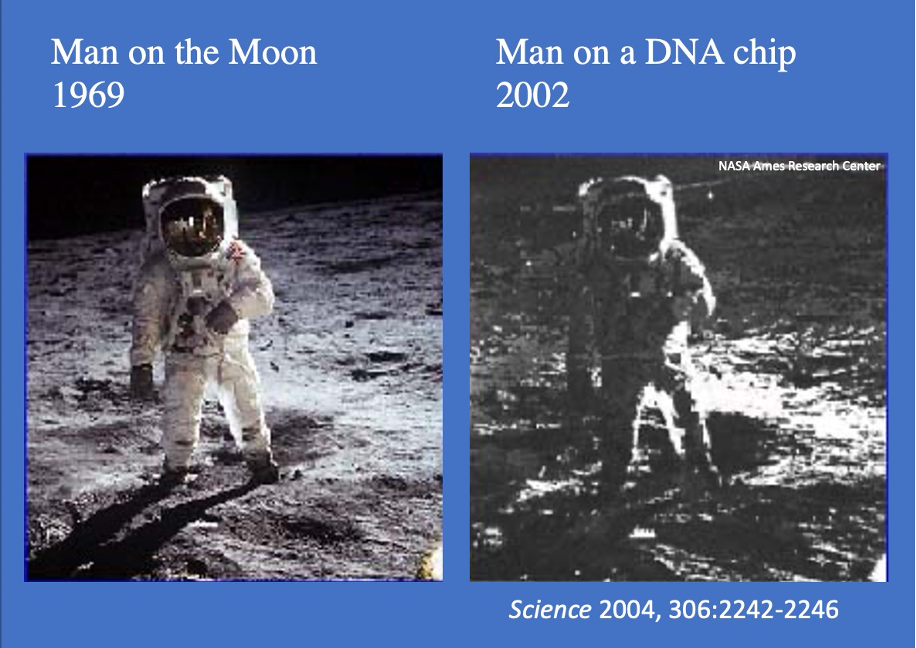
Viktor Stolc
Senior Scientist
Contents
Phone: (650) 604-0018
Email: viktor.stolc-1@nasa.gov
Affiliation: Space Biosciences Research Branch
Professional Background
Biography
- Postdoctoral Fellow, Stanford University School of Medicine, Genome Technology Center, Palo Alto, CA (1998-2000),
- Principal Investigator, Center for Nanotechnology, NASA Ames Research Center, Moffett Field, CA (2000-2002),
- Branch Chief, Life Sciences and Space Biosciences Divisions, NASA Ames Research Center, Moffett Field, CA (2003-2006),
- Senior Scientist, Biomedical Studies, Space Biosciences Research Branch, NASA Ames Research Center, Moffett Field, CA (2004-Pres.),
- Subject matter expert for NASA’s Human Research Program in Genome Science/Omics and Biomedical Countermeasures (2018-pres.).
Education
Postdoctoral Fellow in Genome Science, 2000, Stanford University School of Medicine, Biochemistry Department, Genome Technology Center,
Ph.D. Cell Biology, 1998, Yale University School of Medicine, Molecular, Cellular and Developmental Biology Department,
B.S. Biochemistry, 1989, University of Pittsburgh, Biology Department,
Ph.D. Thesis Mentor: Dr. Sidney Altman.
Research Interests
Long-term research interests are centered, broadly, on the topic of genetic sequence variation in humans and in model organisms, using high-performance computing resources, such as the NASA Ames Supercomputer. A broad range of scientific studies involve spaceflight effects on the genome, including investigation of metabolic and redox effects of spaceflight on the induction of genome sequence variation, sleep disorders, autonomic processes and biorhythms relevant to spaceflight. Specific topics of interest include the time keeping function of the metabolic cycle, oxidation/reduction cycles, electron transport chain biochemistry and other biochemical processes that are linked to mutation frequency, energy production in cells, gene transcription and DNA replication, and larger issues of timing and temporal coordination of biochemical reactions.
Environmental effects are also of interest, including the effects of radiation and microgravity, which have the potential to modify biochemical redox cycles. These basic science research efforts support the development of electromagnetic technology that may one day be used to control the rate of metabolism, via quantum biology, to mitigate the harmful effects of radiation and microgravity during spaceflight, as well as therapeutically in clinical medicine.
Select Publications
- The ENCODE Project Consortium, Stolc, V. (2004) The ENCODE (ENCyclopedia Of DNA Elements) Project. Science 306, 636-640. Cited
- Bertone, P. *, Stolc, V. *, Royce, T.E., Rozowsky, J.S., Urban, A.E., Zhu, X., Rinn, J.L., Tongprasit, W., Samanta, M., Weissman, S., Gerstein, M. and Snyder, M. (2004) Global Identification of Novel Transcribed Sequences in Humans using High-Resolution Genome Tiling Arrays. Science 306, 2242-2246. (* Denotes equal contribution). Cited
- Sea Urchin Genome Sequencing Consortium, (2006) The genome of the sea urchin Strongylocentrotus purpuratus. Science 314, 941-952. Cited
- Dunn, W., Chou, C., Li, H., Hai, R., Patterson, D., Stolc V., Zhu, H., Liu, F. (2003) Functional profiling of a human cytomegalovirus genome. Proc. Natl. Acad. Sci. USA 100, 14223-14228. Cited
- Stolc, V., Samanta, M.P., Tongprasit, W., Marshall, W. (2005) Genome-wide Transcriptional Analysis of Flagellar Regeneration in Chlamydomonas reinhardtii Identifies Orthologs of Ciliary Disease Genes. Proc. Natl. Acad. Sci. USA 102, 3703- 3707. Cited
- Stolc, V. Gauhar, Z., Mason, C., Halasz, G., von Batenburg, M.F., Rifkin, S.A. Hua, S., Herreman, T., Tongprasit, W., Barbano, P., Bussemaker, H.J., and White, K.P. (2004) A Gene Expression Map for the Complete Euchromatic Genome of Drosophila melanogaster. Science 306, 655-660. Cited
- Stolc, V., Shmygelska, A., Griko, Y. (2011) Adaptation of Organisms by Resonance of RNA Transcription with the Cellular Redox Cycle. PLoS ONE 6(9): e25270 Cited
- Li, L., Wang, X., Stolc, V. et al. Genome-wide transcription analyses in rice using tiling microarrays. Nat Genet (2006) 38, 124–129. Cited
- Honeybee Genome Sequencing Consortium. Insights into social insects from the genome of the honeybee Apis mellifera. Nature. (2006) 7114:931-49. Cited
- McCraty, R., Atkinson, M., Stolc, V., Alabdulgader, A. A., Vainoras, A., & Ragulskis, M. (2017). Synchronization of Human Autonomic Nervous System Rhythms with Geomagnetic Activity in Human Subjects. International journal of environmental research and public health, 14(7), 770. Cited
- Alabdulgader, A., McCraty, R., Atkinson, M., Dobyns, Y., Vainoras, A., Ragulskis, M., & Stolc, V. (2018). Long-Term Study of Heart Rate Variability Responses to Changes in the Solar and Geomagnetic Environment. Scientific Reports, 8(1), 2663. Cited
- Griko YV, Loftus DJ, Stolc V., Peletskaya E. (2022) Private Spaceflight: A New Landscape for Dealing with Medical Risk. Life Sci Space Res. 33:41-47.
Other Information
Awards and Activities
- NASA H. Julian Allen Award, 2021
- NASA Twenty Year Service Award, 2020
- NASA Ten-Year Science Award, 2010
- Best Scientist Award, NASA Ames Research Center, 2005
- Damon Runyon Cancer Research Foundation Fellow, 1998-2000
- The Helen Hay Whitney Foundation Fellow, declined 1998



























